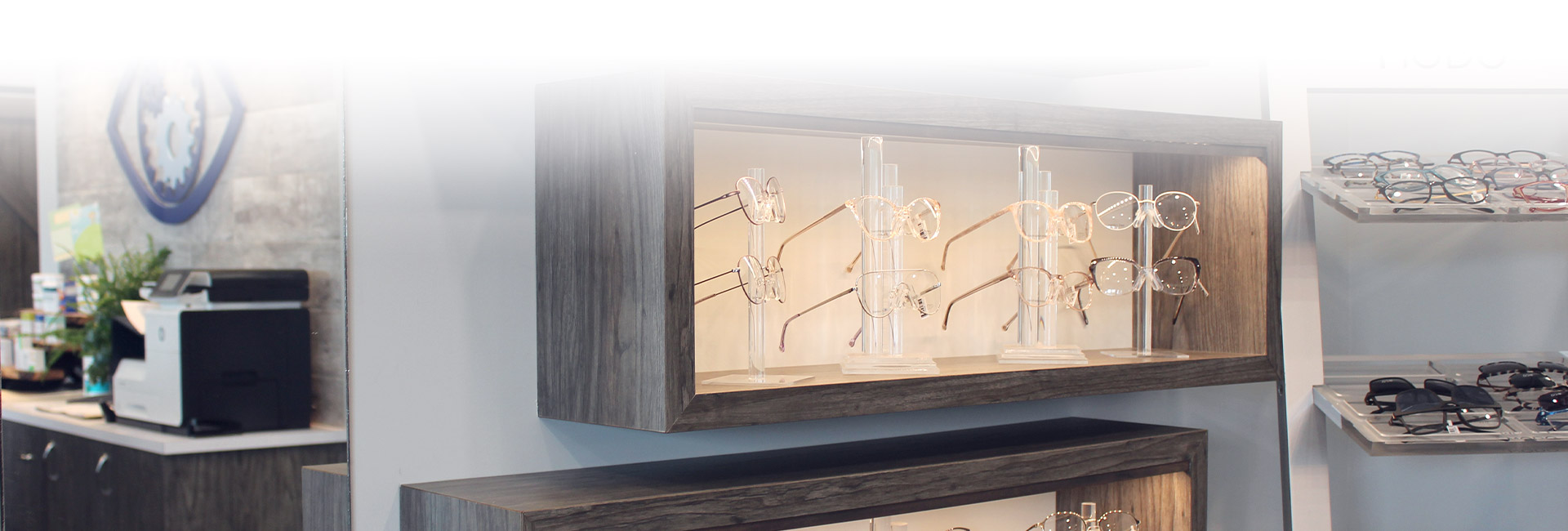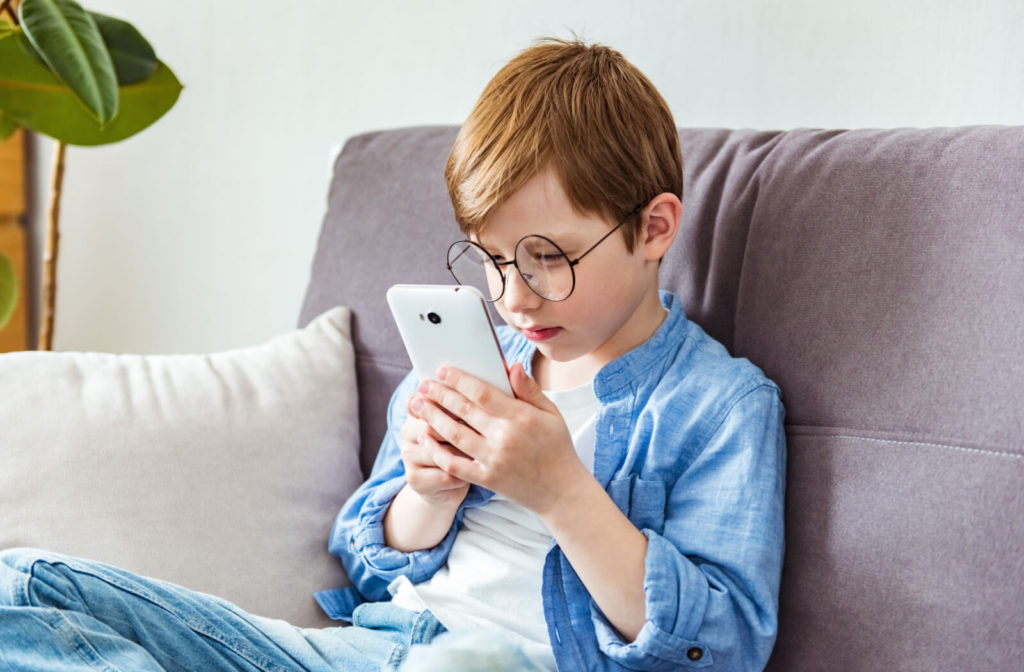Myopia is a common refractive error that begins during childhood. It affects distant vision and, if left unmanaged, can increase the risk of serious eye conditions later in life.
Myopia control is an approach used to slow down the progression of nearsightedness. One method for controlling myopia is with specialty eyeglasses—specifically MiYOSMART.
Managing myopia early, when the eyes are still growing, provides the best results for slowing this vision error. You want to protect your child’s eyes. We want to help. Start by booking an eye exam for your child so you can discuss their options with your eye doctor.
What Is Myopia?
Myopia, commonly known as nearsightedness, is a vision error that causes the eye to bend light incorrectly. It’s caused by an elongation of the eyeball or curvature of the cornea that causes light to land in front of the retina instead of on it, making distant objects appear blurry while nearby objects remain in focus.
Myopia is commonly corrected with eyeglasses and contact lenses.
Causes of Myopia
Myopia is complicated, but it’s believed that a complex combination of genetics and environmental conditions can contribute to myopia development.
Children whose parents have myopia are more likely to develop it, along with having a faster progression.
Spending a lot of time performing close work, like reading or screen time, and not spending enough time outdoors during the body’s important developmental years can also contribute to the onset of myopia.
Symptoms of Myopia
Difficulty seeing things clearly at a distance is the most common indicator of myopia. But other symptoms can include:
- Headaches
- Eye strain
- Squinting
- Eye fatigue when doing focus-intensive work
Children may not always recognize there is an issue with their distance vision. Some child-specific symptoms to look out for include:
- Poor school performance
- A short attention span
- Holding things close to their face
- Sitting near the front of the class
While these symptoms can indicate myopia, other eye conditions can present with similar symptoms. Your child must see their eye doctor for an eye exam, accurate diagnosis, and treatment plan.
Why Is It Important to Control Myopia in Children?
Myopia is caused by a change in the eye’s physical shape. This shape puts stress on the delicate internal structures of the eye, including the retina and optic nerve. As a result, myopia can lead to serious eye complications, such as retinal detachment, cataracts, glaucoma, and permanent vision loss. Once you have myopia, it can’t be reversed, so managing it during childhood while the eyes are still growing is the most effective way to slow its progression.
In addition to these eye health risks, uncorrected myopia can impact your child’s daily life. Children who need glasses often struggle with simple tasks like reading street signs, seeing the board at school, or playing sports, which can affect their academic performance and social interactions.
Controlling myopia at an early age is essential for not just maintaining good vision but also protecting your child’s overall health and well-being. With proper intervention, your child can avoid potential eye complications and set them up for success in school.
How Do Myopia Control Glasses Work?
Single-vision glasses are commonly prescribed to correct nearsightedness and farsightedness but do not slow myopia progression. They merely correct the vision problem.
Specialty myopia control glasses have been developed to correct vision problems while slowing myopia progression. Various myopia-control eyeglasses are now available, and how they control myopia varies slightly between brands and lens types.
We prefer MiYOSMART lenses by Hoya at Beyond 20/20 Optometry. These lenses feature a patented technology called Defocus Incorporated Multiple Segments (DIMS) Technology that uses different zones on the lens to control peripheral defocus.
The defocus area these lenses create helps reduce the stimulus that causes eye elongation. By wearing these glasses, your child’s eyes receive clearer central vision while experiencing reduced peripheral focus, which signals to the brain to slow eye growth.
MiYOSMART lenses have been clinically proven to slow myopia progression by an average of 60% in children aged 8–13. With proper use and care of these glasses, you can significantly decrease the rate of myopia progression.
Other Myopia Control Methods
Eyeglasses are often the first choice in treatment because they’re easy and safe to use. Your child’s eye doctor may recommend a different or combined myopia control approach.
Atropine Eye Drops
Atropine eye drops are a type of medication that can be used to relax the eye muscles and reduce nearsightedness. It’s generally prescribed in low doses to minimize side effects.
MiSight 1 Day Contact Lenses
Contact lenses for myopia control work in a similar way to MiYOSMART lenses. They utilize specialized designs and materials to help slow the elongation of the eye.
MiSight 1 day contact lenses offer a convenient and effective solution for managing nearsightedness in children. With their unique dual-focus design, these lenses help slow the progression of myopia by simultaneously correcting vision and exerting a defocusing effect on the retina.
Orthokeratology
Orthokeratology (ortho-k) is a custom-made rigid gas-permeable contact worn overnight to gently reshape the cornea and reduce or eliminate the need for glasses during the day. Ortho-k has also been shown to slow myopia by around 50%.

Discuss Your Child’s Eye Health with Their Eye Doctor
Myopia control can help protect your child’s future eyesight and make sure their eyes won’t hold them back from success in sports or school.Take the first step in slowing your child’s myopia progression, and book a children’s eye exam at Beyond 20/20 Optometry.




